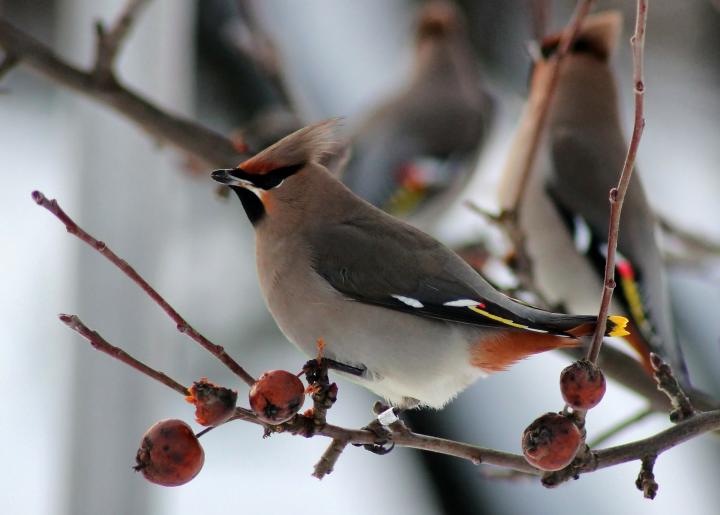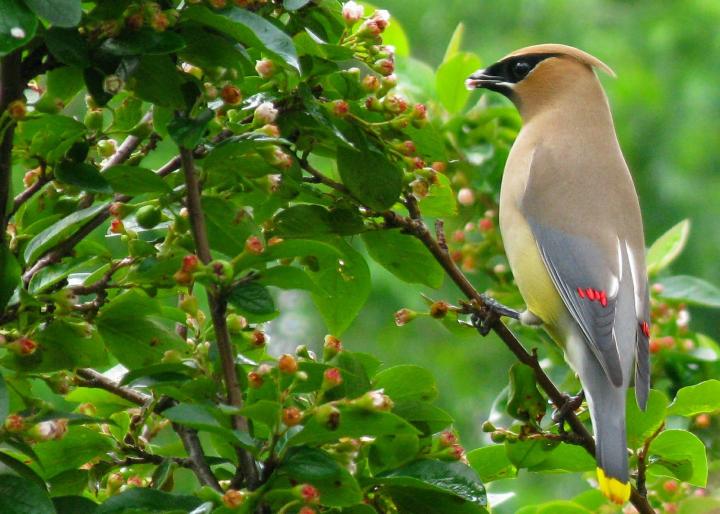
Learn All About Bohemian and Cedar Waxwings!
ADVERTISEMENT
I just seen a flock of the waxwing’s from my kitchen window..i first seen 2 setting on an arch then 3 then probably 15 to 20 taking turns drinking water from the bird bath. I had never seen this species before. Had to look them up. Cushing Oklahoma. 3-31-2024
My wife and I just saw a flock of 20 bohemian cedar waxwings, eating some berries on our ornamental crab tree.
January 25/2024 3:30 pm. North Kildonan Winnipeg Man.
We summer in Wyoming and see the Cedar Waxwings several times in the summer. In June they are here eating the pink blossoms off the crab apple trees and in early September eating choke cherries. They are pretty much non-nonexistent in between.
Just saw what 2 Cedar Waxwing birds outside my window. They quickly took a rest in my Aspen tree and then we're gone again. I have seen them maybe 4-5 times in past years, but usually later in the year. Lander, Wyoming 5-18-2023
We just kayaked the Sturgeon River near Wolverine, MI. Waxwings of unknown variety followed us the whole distance down the river of our 5 hour trip. They were not shy and just awesome to see. Beautiful birds!
Incredible! I live just at the edge of a ravine... I had what seemed like at least hundreds if not thousands of these birds out back this afternoon in edmonton alberta.. March 26 2022... it was absolutely amazing!
January 12,2022 11:00 am Just had a huge flock of Bohemian Waxwings land in my front yard tree in Winnipeg, Canada. They were feasting on the crab apple tree berries. I have never seen these birds before not to mention so many at once. It was a nice winter surprise to see this flock all over the yard in the snow and the branches of the trees.
Yes, so lovely to see! My first sighting as well, as I'd only seen cedar waxwings up to today!
Wpg. February 22, 2022 and we just saw a good number of them...14 within visibility long enough to count, but probably more nearby, as on first sighting they were numerous. Only one mountain ash nearby, but I don't think anything was left on it to forage. ..However, there's a park nearby so they may have found their fill over there as they were certainly all very plump & happy!
I just found this site but anyway last April, 4/27/21 at 7:47:13 am, a huge flock of cedar waxwings just landed in the backyard and watched the sun come up higher in the sky! It was awesome , oh I live in central Fl. Oh and I have photos too!
Unfortunately found one that had crashed into my front door after eating I assume from the crab apple tree in my front yard. There was also a second one that survived and flew off. Had never seen these before. Very pretty bird. Central Kentucky USA










